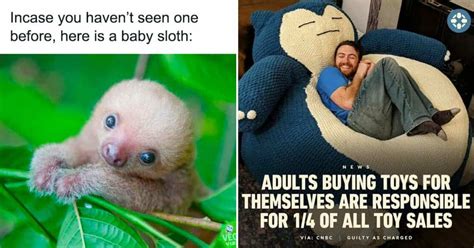
A golden retriever in a Seattle neighborhood is charming residents with its unique ball-sharing habit, dropping off its treasured toys on doorsteps and driveways before cheerfully continuing its walk.
Seattle’s Belltown neighborhood has a new, furry philanthropist: a golden retriever named Maple, whose penchant for sharing her tennis balls and other toys is delighting residents and garnering widespread attention online. Maple, accompanied by her owner, has developed a routine of strategically depositing her playthings on doorsteps, sidewalks, and even car bumpers, before trotting off, seemingly content with her acts of canine generosity.
The unusual behavior was first noticed by locals who initially were puzzled by the appearance of tennis balls in unexpected places. Soon, a pattern emerged: Maple, on her daily walks, was intentionally leaving her toys for others to discover. The acts quickly transformed into a source of joy and amusement for the community.
“She loves giving gifts,” Maple’s owner, who prefers to remain anonymous, told Yahoo Lifestyle. “It makes her happy.” This simple motivation appears to be at the heart of Maple’s behavior, turning ordinary neighborhood strolls into opportunities for connection and lighthearted fun. The owner also mentioned that Maple seems to enjoy the process of selecting the perfect spot for each toy, carefully considering the placement before moving on.
Word of Maple’s ball-sharing antics spread quickly through social media, with residents sharing photos and videos of the golden retriever in action and the unexpected gifts she leaves behind. The online buzz has further amplified Maple’s local celebrity, drawing attention from news outlets and dog lovers across the country. Many online commenters have expressed admiration for Maple’s sweet nature and the positive impact she has on her community.
Maple’s story is a heartwarming reminder of the simple joys animals can bring to people’s lives. Her acts of kindness, though seemingly small, are fostering a sense of community and connection in an urban environment, one tennis ball at a time. The owner noted that many neighbors have started leaving toys out for Maple as well, creating a reciprocal cycle of giving and receiving.
The golden retriever’s actions also spark a broader conversation about the role of pets in urban communities and the ways they can contribute to social well-being. Pets often serve as icebreakers, encouraging interactions between neighbors and fostering a sense of shared responsibility for the well-being of the community. Maple’s story perfectly illustrates this dynamic.
Beyond the immediate joy Maple’s actions bring, her story also highlights the importance of responsible pet ownership. Maple’s owner ensures she is always supervised during her walks and that she only interacts with people who are comfortable with dogs. This responsible approach ensures that Maple’s generosity remains a positive experience for everyone involved. The owner also regularly collects any toys that have been left out for an extended period, ensuring that the sidewalks and public spaces remain clean and safe.
Maple’s story serves as a testament to the unique bond between humans and animals. Her simple act of sharing has brought joy to countless people and transformed her neighborhood into a more connected and cheerful place. As Maple continues her daily walks, leaving a trail of tennis balls and smiles in her wake, she reminds us all of the power of small acts of kindness and the joy of community.
In-Depth Analysis:
Maple’s behavior is not only charming but also quite intriguing from an ethological perspective. While it’s difficult to definitively ascertain a dog’s motivations, several factors could contribute to Maple’s ball-sharing antics.
Firstly, golden retrievers are known for their retrieving instincts. Bred to retrieve waterfowl for hunters, they possess a strong innate desire to carry objects and bring them to people. Maple’s behavior could be a manifestation of this instinct, redirected towards a broader audience. Instead of bringing the ball back to her owner, she extends the act of retrieving to the entire neighborhood.
Secondly, dogs are social animals who thrive on interaction and attention. By leaving her toys for others to find, Maple may be initiating social contact in her own unique way. She might be seeking acknowledgment or simply enjoying the process of giving and receiving. The positive reactions she receives from people likely reinforce her behavior, making her more likely to repeat it in the future.
Thirdly, the act of giving could be intrinsically rewarding for Maple. Dogs, like humans, are capable of experiencing a range of emotions, including altruism. It’s possible that Maple derives pleasure from seeing others happy and that her ball-sharing is a genuine expression of canine generosity.
However, it’s also important to consider the possibility that Maple’s behavior is simply a playful quirk. Dogs are known for their individual personalities and eccentricities. Maple’s ball-sharing could be a unique habit that she has developed over time, without any specific underlying motivation.
Whatever the reason, Maple’s actions have had a profound impact on her community. In an increasingly disconnected world, she has become a symbol of connection and goodwill. Her story reminds us of the importance of simple acts of kindness and the power of animals to bring people together.
The broader implications of Maple’s actions also extend to the study of animal behavior and the human-animal bond. Her story challenges us to reconsider our assumptions about animal intelligence and emotions. It suggests that animals are capable of more complex social interactions and emotional expressions than we often give them credit for.
Furthermore, Maple’s story highlights the potential for animals to contribute to human well-being. Studies have shown that pets can reduce stress, lower blood pressure, and increase feelings of social connection. Maple’s actions, while seemingly small, contribute to this broader phenomenon, demonstrating the positive impact that animals can have on human lives.
The incident also raises questions about the responsibilities of pet owners in urban environments. While Maple’s actions are generally well-received, it’s important for pet owners to be mindful of the potential impact their animals may have on others. This includes ensuring that their pets are well-behaved, supervised, and do not create a nuisance for neighbors. Maple’s owner’s dedication to responsible pet ownership is a crucial factor in the positive reception of her actions.
In conclusion, Maple’s ball-sharing antics are more than just a cute story; they are a window into the complex world of animal behavior and the powerful bond between humans and animals. Her actions remind us of the importance of kindness, connection, and the simple joys of life.
Background Information:
The story of Maple the golden retriever taps into a larger cultural fascination with animals and their ability to enrich human lives. For centuries, animals have been domesticated and integrated into human societies, serving various roles ranging from working companions to beloved family members. The bond between humans and animals is deeply ingrained in our history and continues to evolve in modern times.
In urban environments, pets often play a particularly important role, providing companionship, reducing loneliness, and fostering social interaction. Studies have consistently shown that pet owners tend to be more physically active, have lower rates of depression, and report higher levels of social support.
The rise of social media has further amplified the role of pets in contemporary culture. Platforms like Instagram and TikTok are filled with accounts dedicated to showcasing the lives of animals, from adorable puppies to quirky cats. These accounts often amass large followings and serve as a source of entertainment, inspiration, and connection for animal lovers around the world.
Maple’s story is a perfect example of this phenomenon. Her ball-sharing antics have resonated with people across the globe, generating a wave of positive attention and solidifying her status as a local celebrity. The online buzz surrounding Maple’s actions underscores the power of social media to amplify heartwarming stories and connect people across geographical boundaries.
The story also reflects a growing awareness of animal welfare and the importance of responsible pet ownership. As societies become more urbanized and industrialized, there is a greater emphasis on ensuring that animals are treated with respect and compassion. This includes providing them with adequate food, shelter, and veterinary care, as well as opportunities for socialization and enrichment.
Maple’s owner’s dedication to responsible pet ownership is a key factor in the positive reception of her actions. By ensuring that Maple is well-behaved, supervised, and does not create a nuisance for others, her owner has created a win-win situation for both Maple and the community.
Furthermore, Maple’s story is part of a broader trend of increased attention to urban wildlife and the challenges of coexisting with animals in densely populated areas. As cities continue to grow and expand, it becomes increasingly important to find ways to share space with animals in a sustainable and harmonious way. This includes creating green spaces, managing wildlife populations, and educating residents about responsible interactions with animals.
Maple’s story serves as a reminder that animals are an integral part of our urban ecosystems and that their presence can enrich our lives in countless ways. By embracing the opportunity to coexist with animals, we can create more vibrant, resilient, and compassionate communities.
Expanded Context:
The phenomenon of dogs engaging in seemingly altruistic or unusual behaviors has been observed and documented in various contexts. Animal behaviorists often attribute these actions to a combination of factors, including genetics, learning, and individual personality. While it’s difficult to definitively ascertain the motivations behind these behaviors, they often provide valuable insights into the complex cognitive and emotional lives of animals.
For example, some dogs have been known to comfort their owners when they are feeling sad or distressed. Others have been observed sharing their food with other animals in need. These behaviors suggest that dogs are capable of empathy and compassion, and that they are motivated by more than just self-interest.
Maple’s ball-sharing antics are a unique manifestation of this broader phenomenon. Her actions are not only heartwarming but also somewhat puzzling. Why does she choose to leave her toys for others to find? What does she get out of it?
While there is no definitive answer to these questions, several hypotheses can be considered. As previously mentioned, Maple’s behavior could be a manifestation of her retrieving instincts, redirected towards a broader audience. She might also be seeking social interaction or deriving pleasure from the act of giving.
Another possibility is that Maple’s behavior is a form of play. Dogs often engage in playful behaviors that involve manipulating objects and interacting with others. Maple’s ball-sharing could be a way for her to engage in play on her own terms, without necessarily requiring direct interaction with humans.
Whatever the reason, Maple’s actions have had a significant impact on her community. She has become a symbol of connection and goodwill, and her story has resonated with people around the world. Her actions remind us of the importance of kindness, compassion, and the simple joys of life.
Moreover, Maple’s story also highlights the importance of creating pet-friendly environments in urban areas. By providing dogs with opportunities to exercise, socialize, and engage in enriching activities, we can enhance their well-being and foster positive relationships between humans and animals. This includes creating dog parks, allowing dogs in certain public spaces, and promoting responsible pet ownership.
The city of Seattle, where Maple resides, has a reputation for being a dog-friendly city. The city has a high percentage of dog owners and offers a variety of amenities for dogs, including dog parks, off-leash areas, and dog-friendly businesses. This environment likely contributes to Maple’s ability to freely express her unique personality and engage in her ball-sharing antics.
In conclusion, Maple’s story is a testament to the unique bond between humans and animals and the power of animals to enrich our lives in countless ways. Her actions remind us of the importance of kindness, connection, and responsible pet ownership. By embracing the opportunity to coexist with animals, we can create more vibrant, resilient, and compassionate communities.
Frequently Asked Questions (FAQ):
-
What exactly does Maple do with the balls?
Maple, a golden retriever in Seattle, has a habit of picking up tennis balls and other toys during her walks and strategically dropping them off on doorsteps, sidewalks, and car bumpers throughout her neighborhood. She then cheerfully continues her walk.
-
Why does Maple share her toys?
According to her owner, “She loves giving gifts. It makes her happy.” While the exact motivation is unknown, it’s believed that Maple enjoys the act of giving and the positive attention she receives. It could also be related to her retrieving instincts or a form of play.
-
Is Maple’s owner aware of and supportive of her behavior?
Yes, Maple’s owner is fully aware and supportive of her ball-sharing habit. They monitor her during walks and ensure she only interacts with people who are comfortable with dogs. They also collect any toys left out for extended periods to keep the neighborhood clean.
-
How have people reacted to Maple’s ball-sharing?
The reaction has been overwhelmingly positive. Neighbors are delighted by Maple’s actions and often share photos and videos on social media. Some even leave out toys for her, creating a reciprocal cycle of giving. Her story has also garnered attention from local and national news outlets.
-
What does Maple’s story say about the human-animal bond and community?
Maple’s story is a heartwarming reminder of the positive impact animals can have on communities. Her simple act of sharing fosters connection and brings joy to those around her. It highlights the importance of kindness and the role animals play in enriching our lives. It also underscores the significance of responsible pet ownership in ensuring these interactions are positive for everyone involved.
The Broader Societal Impact:
Maple’s heartwarming tale transcends mere amusement, serving as a potent symbol of connection, kindness, and community spirit in an increasingly fragmented world. In an era often characterized by social isolation and digital detachment, Maple’s simple act of sharing acts as a powerful antidote, reminding us of the importance of genuine human connection and the capacity for small acts of generosity to brighten lives.
The widespread media coverage and online enthusiasm surrounding Maple’s story demonstrate a deep-seated yearning for positive news and uplifting narratives. In a media landscape often dominated by negativity and conflict, Maple’s story offers a refreshing respite, showcasing the inherent goodness that exists within our communities and the power of animals to unite us.
Furthermore, Maple’s story underscores the vital role that pets play in promoting social well-being and fostering a sense of belonging. Studies have consistently shown that pet ownership is associated with reduced stress, improved mental health, and increased social interaction. Maple’s actions serve as a living testament to these benefits, demonstrating how animals can act as catalysts for connection and community engagement.
Her behavior also brings to light the importance of creating pet-friendly urban environments that cater to the needs of both animals and their owners. Cities that prioritize green spaces, dog parks, and responsible pet ownership policies are more likely to foster strong human-animal bonds and reap the social and economic benefits that come with a thriving pet-owning population.
Moreover, Maple’s story raises important questions about the ethics of animal ownership and the responsibilities that come with caring for a companion animal. Responsible pet ownership entails providing animals with adequate food, shelter, veterinary care, and opportunities for exercise and socialization. It also involves ensuring that animals are well-behaved, supervised, and do not pose a threat to public safety or the environment.
Maple’s owner’s commitment to responsible pet ownership is a crucial factor in the positive reception of her actions. By ensuring that Maple is well-behaved and supervised, her owner has created a win-win situation for both Maple and the community. This underscores the importance of education and awareness campaigns that promote responsible pet ownership and encourage pet owners to be mindful of the impact their animals may have on others.
In conclusion, Maple’s ball-sharing antics are more than just a heartwarming story; they are a powerful reminder of the interconnectedness of all living beings and the importance of fostering compassion, kindness, and community spirit in our increasingly complex world. Her story serves as an inspiration to us all, encouraging us to embrace the simple joys of life, to connect with others, and to recognize the profound impact that even the smallest acts of generosity can have on those around us. As Maple continues her daily walks, leaving a trail of tennis balls and smiles in her wake, she reminds us all of the power of love, compassion, and the enduring bond between humans and animals.









